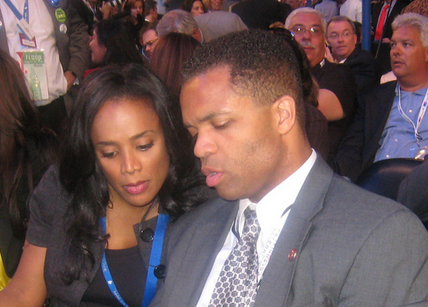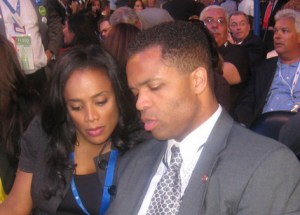Latino Vote Key To Replace Jesse Jackson Jr.

 By Janell Ross, Huffington Post Latino Voices
By Janell Ross, Huffington Post Latino Voices
In 2011, as Illinois politicians redrew congressional district maps, they exercised a power grab that was intended to protect those already in office or even gain more seats for Democrats.
Officials split some of the state’s growing Latino population between districts already represented by Democrats and those where they hoped to see Republicans lose. An incumbent Democrat like former Chicago-area Congressman Jesse Jackson Jr. was supposed to have little problem holding a seat that for three decades has been held by an African-American. But in 2011, no one knew then that Jackson would spend a portion his term in seclusion trying to manage a mental illness. And no one knew that, after winning reelection earlier this month, Jackson would resign amid allegations of misappropriated campaign funds.
 Now, with Jackson out and Illinois set to stage a special election in February, Jackson’s former district could end up being represented by a white Democrat from Chicago’s suburbs. And for the crowded field of mostly black candidates that have expressed interest in Jackson’s old job, winning support of Latino voters and at least a smattering of white voters may be the key to victory.
Now, with Jackson out and Illinois set to stage a special election in February, Jackson’s former district could end up being represented by a white Democrat from Chicago’s suburbs. And for the crowded field of mostly black candidates that have expressed interest in Jackson’s old job, winning support of Latino voters and at least a smattering of white voters may be the key to victory.
“Ironically, because of redistricting, what has long been a seat held by a black politician is going to require a black candidate that can bring together a kind of Barack Obama pan-ethnic coalition just to maintain the status quo,” said Laura Washington, a political consultant and former political science professor at De Paul University.
The situation in Chicago isn’t unique, political analysts say. In states such as California, Texas and Florida, black politicians who have long represented majority black districts have had to adapt their political messages and policy priorities to appeal to growing shares of Latino voters and push to have college towns and their legions of young, often liberal white voters drawn into their districts.
In the 1970s and 80s, political power struggles flared in cities around the country as whites decamped to the suburbs, said David Bositis, a senior political analyst at the Joint Center for Political and Economic Studies, a Washington, D.C.-based think tank. Minority voters were frequently divided among crowded fields of black candidates, leaving room for well-financed white candidates often backed by conservative business interests to win by narrow majorities, Bositis said.
That’s a pattern that dominated elections in cities like St. Louis for decades, according to Bositis. In the 1980s and 1990s, the number of black elected officials peaked in cities like Los Angeles. Then, in the 1990s and 2000s, cities like Baltimore and Gary, Ind. — a city which was then about 90 percent…
This article was first published in Huffington Post Latino Voices.
Janell Ross is a reporter who covers political and economic issues at the Huffington Post, based in New York. Previously she worked as a business reporter at The Huffington Post and covered business, immigration, race and social issues at The Tennessean in Nashville. Janell also covered covered local politics, labor and higher education at The News & Observer in Raleigh and the Corpus Christi Caller-Times. Janell earned a bachelor’s degree from Vassar College and a master’s degree from the Columbia University School of Journalism.
[Photo by chicagopublicmedia]
